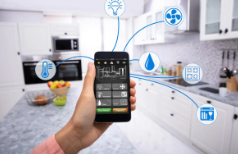
An Introductory Guide to the Benefits and Capabilities of Home Automation
In an age where technology is woven into the fabric of our daily lives, the concept of home automation has rapidly evolved into a component of our daily modern life. No longer a futuristic fantasy, the ‘smart home’ has arrived, promising more convenience, efficiency, and control than we have ever known. For those who have yet to dip their toes into this pool of seamless living, the benefits and gadgets may seem overwhelming. Fear not, for this article serves as your compass to understanding and implementing home automation in your sanctuary.
The Rise of Home Automation
At its core, home automation—also known as a “smart home”—is the merging of technology and services for a better living experience. The rise of high-speed internet and smartphone usage has made controlling home automation systems more accessible and user-friendly. Due to home Automation, we can control appliances from anywhere through a networking device. The primary goal? To provide a smoother, more efficient, and more enjoyable domestic environment.
The Benefits of a Smart Home
1. Security and Peace of Mind
Smart home automation increases security through cameras. When you’re away on vacation, you can get an update by tapping on your phone. This level of peace of mind is the most immediate and tangible benefit of home automation.
2. Energy Efficiency and Savings
You can schedule your smart appliances to run when it benefits you and save energy and money. Coupled with smart lighting and energy monitoring, home automation can substantially reduce your monthly utility bills.
3. Convenience and Comfort
The extreme convenience of being able to dim the lights for a movie night, play your favorite playlist as you walk in the door, or adjust your home’s temperature from the couch without lifting a finger speaks for itself.
Types of Home Automation Systems
Wireless vs. Wired Systems
Wireless systems offer more flexibility and can be easier to install, which often makes them ideal for rebuilding most houses. Wired systems, on the other hand, are typically more robust and, in some cases, more secure.
Standalone vs. Whole-Home Integration
Standalone systems – like a single smart thermostat – operate independently of other devices. Whole-home integration systems offer centralized control and the ability for devices to communicate and trigger actions with greater fluidity and customization.
Popular Home Automation Devices
1. Smart Thermostats
Thermostats can be used with home automation and are responsible for controlling house cooling, ventilation, and heating. They are devices that allow the user to control the temperature of their home throughout the day using a schedule.
2. Security Cameras and Systems
Gone are the days of clunky, intrusive security systems. Sleek, intelligent cameras and monitoring tools like those by Ring and Arlo provide comprehensive home security solutions at your fingertips.
3. Smart Lighting
Smart lights have a chip inside them so that they can communicate with other devices wirelessly. Every light can connect to an app, smart home assistant, or other smart accessory, so you can automate your lights, change their color, or control them remotely.
4. Voice Assistants
With the likes of Amazon Echo and Google Home, controlling your smart home system with voice commands has gone from a novelty to the norm, offering a deeply integrated mode of operation for various devices.
Getting Started with Home Automation
Assessing Your Home’s Needs
First, you need to identify the pain points of your daily home life, that you need that will provide benefits from automation, such as high energy consumption, frequent travel, or mobility issues.
Setting a Budget
Home automation can range from the purchase of a single device to a comprehensive installation. It’s important to set a budget and prioritize which systems or devices are most essential for your household.
Installation Considerations
For those who are tech-savvy, many systems offer straightforward DIY installation guidance. Others prefer to have a professional install and set up their smart home to ensure it’s done right the first time.
Future Trends and Innovations in Home Automation
The smart home sector is a fast-growing, innovative-rich field that’s constantly evolving in our daily life. Anticipate the increasing integration of AI and machine learning, leading to homes that understand and predict your needs with uncanny accuracy.
Sustainable and eco-friendly automation solutions will also rise in importance, aligning with the global push toward greener living. Products that monitor and reduce water usage optimize solar power consumption, and even systems that compost waste more efficiently are on the horizon.
Conclusion
The main purpose of a home automation system is to provide people with the ease to control different home appliances with the help of the Android application present on their mobile phones and to save electricity, time, and money. For the purpose of security and innovation, it’s a better time to join the new revolution.

